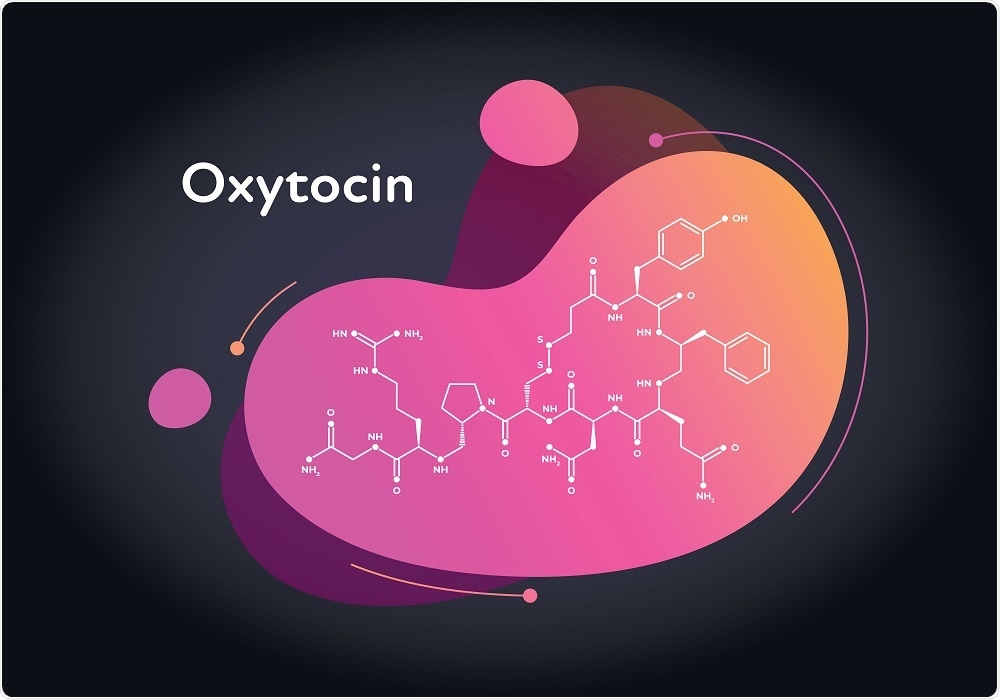Overactivity of the hormone oxytocin has been identified as a potential key element in hypersexual disorder, a compulsive sexual disorder that affects around 3 to 6 percent of the population. The discovery could lead to pharmacological treatments that target oxytocin activity.
The neurobiology of hypersexual disorder is not understood, it is thought to develop in adolescence and affect men more often than women, although reliable evidence of significant gender disparities is not common.
Lead author of the study Adrian Boström, from the Department of Neuroscience at Uppsala University, Sweden, spoke on the aims and focus of the study:
We set out to investigate the epigenetic regulatory mechanisms behind hypersexual disorder so we could determine whether it has any hallmarks that make it distinct from other health issues.”
Epigenetic differences underly the condition
The researchers analyzed 8,852 DNA methylation regions linked to microRNAs in order to discover any differences between blood samples they collected from 60 men and women with hypersexual disorder. These blood samples were then compared with 33 people not living with the disorder.
While methylation does not change the sequence of DNA, it can alter the activity of a DNA segment and change gene expression and their function. Generally, methylation leads to a reduction in a gene’s functionality.
MicroRNAs were analyzed where altered DNA methylation was found as microRNAs are able to permeate the blood-brain-barrier and change the expression of several thousands of genes not only in the brain, but in surrounding tissues too.
To our knowledge, our study is the first to implicate dysregulated epigenetic mechanisms of both DNA methylation and microRNA activity and the involvement of oxytocin in the brain among patients seeking treatment for hypersexuality.”
Adrian Boström, First Author
The research led to the identification of two DNA regions that differed in people living with hypersexual disorder. Results showed that DNA methylation was not functioning properly causing a particular microRNA, microRNA-4456, which is responsible for silencing genes, to be under-expressed.
Normally, microRNA-4456 targets genes that are expressed at high levels in the brain. It also regulates the expression of oxytocin, a hormone strongly associated with human bonding due to its presence during social bonding, sexual reproduction, and the period after childbirth. Oxytocin has also been associated with aggressive behavior in both men and women.
With the silencing functions of microRNA-4456 impaired, levels of oxytocin are thought to be present in increased levels in people with hypersexual disorder, but the study does not definitively confirm this to be the case and draws no causal link.
The study states that it “provides evidence that DNA methylation at the cg01299774 locus is associated with the expression of [microRNA-4456],” and that microRNA-4456 targets genes expressed in the brain tissue and those involved in “major neuronal molecular mechanisms thought to be relevant to the pathogenesis of HD.”
 Tasty_Cat | Shutterstock
Tasty_Cat | Shutterstock
Applying the findings to other addictive behaviors
Other types of addictive behavior, in this case, alcohol dependence, were also analyzed alongside the results gleaned from the researcher’s hypersexual disorder investigations to see whether there were any common factors across addictive conditions.
The same DNA region was found to be under-methylated in patients with alcohol dependence, leading the researchers to hypothesize that this factor could be the common link between the addictive factors of both alcohol dependence and hypersexual disorder.
Further research will be needed to investigate the role of microRNA-4456 and oxytocin in hypersexual disorder, but our results suggest it could be worthwhile to examine the benefits of drugs and psychotherapy to reduce the activity of oxytocin.”
Professor Jussi Jokinen, Chief Physician, Umeå University
Limitations of the study include the fact that the mean difference in DNA methylation between patients with hypersexual disorder and patients without the disorder only stood at 2.6 percent. This means the physiological changes caused by alterations in DNA methylation may not be as potent as is suggested by the results.
However, there is a growing body of evidence that suggests that subtle changes in methylation can have widespread, significant effects on the body, meaning that while no definitive, causal link has been drawn up in this study, its results are important additions to this research space.
Journal reference:
Bostrom, A., et al. (2019). Hypermethylation-associated downregulation of microRNA-4456 in hypersexual disorder with putative influence on oxytocin signalling: A DNA methylation analysis of miRNA genes. Epigenetics. https://doi.org/10.1080/15592294.2019.1656157